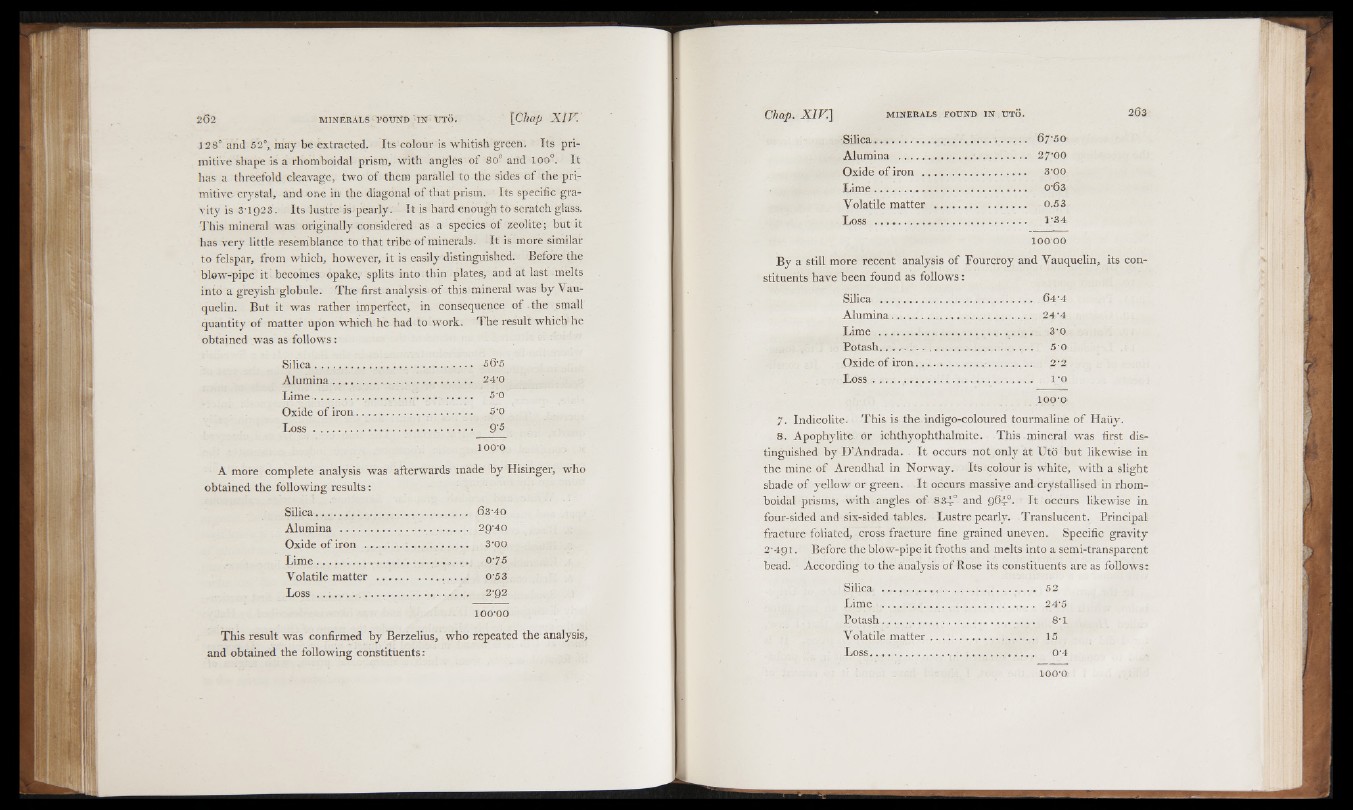
12 8 ° and 52°, may be extracted. Its colour is whitish green. Its primitive
shape is a rhomboidal prism, with angles of 80° and 100°. It
has a threefold cleavage, two o f them parallel to the sides of the primitive
crystal, and one in the diagonal o f that prism. Its specific gravity
is 3-1923. Its lustre:is pearly. It is hard enough to scratch glass.
This mineral was originally considered as a species of zeolite; but it
has very little resemblance to that tribe o f minerals. It is more similar
to felspar, from which, however, it is easily distinguished. Before the
blew-pipe it becomes opake, splits into, thin plates, and at last .melts
into a greyish globule. The first analysis of this mineral was by Vau-
quelin. But it was rather imperfect, in consequence o f the small
quantity of matter upon which he had to work. The result which he
obtained was as follows:
S ilic a ............................................... >6-5
Alumina.............................................. 24-0
Lime ,.-................ 5'0
Oxide o f iron....................... - S'O
L o s s ..................................................... 9 '5
ioo-o
A more complete analysis was afterwards made by Hisinger, who
obtained the following results:
S i l i c a . . . . . . . . .
Alumina ........
Oxide o f iron .
L im e : . . .
Volatile matter
Loss . . . . . . . . .
63-40
29-40
3-00
075
0-53
2-92
loo-oo
This result was confirmed by Berzelius, who repeated the analysis,
and obtained the following constituents:
•Silica..................... . .......... -........ 67-50
Alumina .................................27-00
Oxide of iron.................. 3"00
Lime.............................................. 0-63
Volatile matter . . .»...................... 0.5 3
Loss .............................................. 1’34
10000
By a still more recent analysis of Fourcroy and Vauquelin, its constituents
have been found as follows:
Silica ......................... 64-4
Alumina.............. 24-4
Lime .......................................... 3 0
Potash.. . . . . . . ; ................. 5 ’ 0
Oxide of iron ................ 2-2
Loss ............................. 1*0
loo-o
7. Indicolite. This is the indigo-coloured tourmaline o f Haiiy.
8. Apophylite or ichthyophthalmite. This .mineral was first distinguished
by D’Andrada. . It occurs not only at Uto but likewise in
the mine o f Arendhal in Norway. Its colour is white, with a slight-
shade of yellow or green. It occurs massive and crystallised in rhomboidal
prisms, with angles o f 8 3^° and 964.°. : It occurs likewise in
four-sided and six-sided tables. Lustre pearly. Translucent. Principal
fracture foliated, cross fracture fine grained uneven. Specific gravity
2 491. Before the blow-pipe it froths and melts into a semi-transparent
bead. According to the analysis of Rose its constituents are as follows :
Silica .............................. 52
Lime ............. 24-5
Potash ....................................... 8-1
Volatile matter....................... 15
Loss........................... 0-4